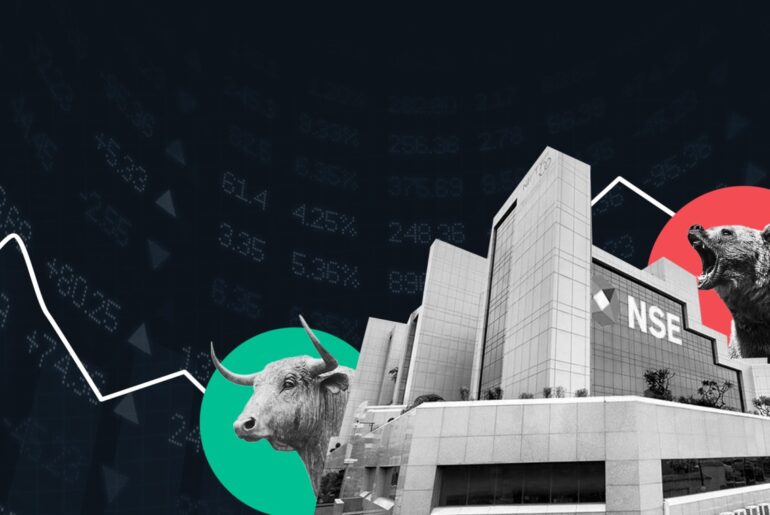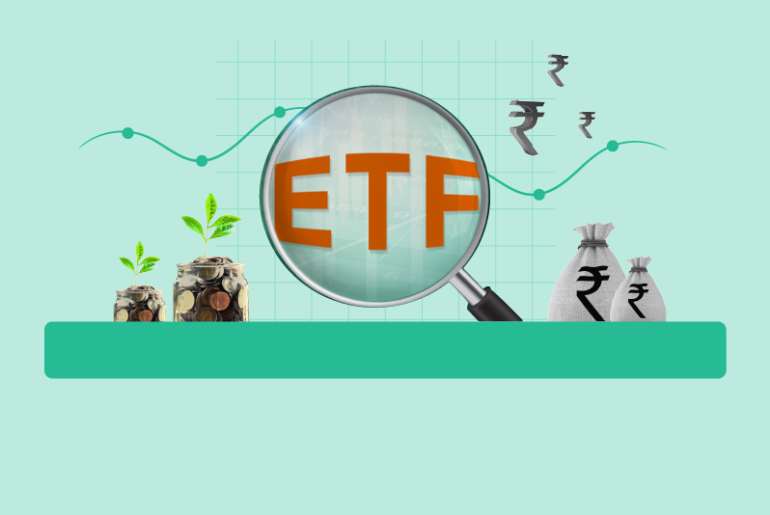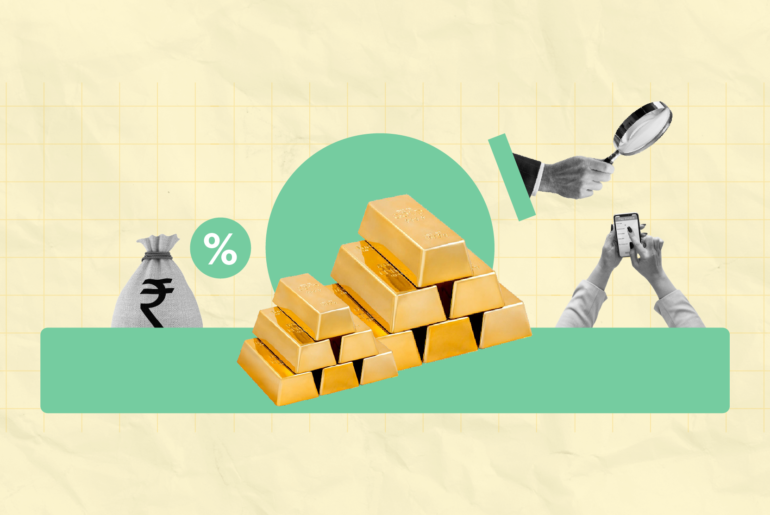Last Updated on Dec 14, 2021 by Aradhana Gotur
Hey peeps! We hope that you found our “How market indices can help you understand investment patterns” article useful. We are back with the second Feature Article on Tickertape’s ETF pages. This article discusses ETFs, the checklist to look at when choosing an ETF, and how Tickertape’s ETF Pages can aid smart investment-related decision making. Let’s start by understanding what an ETF is.
The article covers
Checklist to pick the right ETF for you
- Look at how concentrated the portfolio is
- Look at the ETF’s tracking error
- Look at the cost of investing in an ETF
- Look at how liquid the ETF is
Application of Tickertape’s ETF pages
Table of Contents
What are ETFs?
Known as exchange-traded funds, ETFs invest in a basket of financial securities such as equities and debt instruments and offer the benefits of diversification. That’s why ETFs sound like mutual funds however they aren’t the same. Unlike mutual funds, ETFs are traded on stock exchanges and designed to closely match the constituents of a stock market index. Such ETFs are called passive ETFs and therefore it makes sense that the returns of these funds ideally match those of the index.
But not all ETFs track an index. Actively-managed ETFs don’t replicate an index and are essentially managed by professionals as in the case of mutual funds, who would look to minimise risk by diversifying the portfolio. Now let us look at the checklist to refer when adding an ETF to your investment portfolio.
1. Look at how concentrated the portfolio is
A sector-specific ETF carries a high concentration risk as all its constituents belong to the same sector. This may drain your returns if the sector performs poorly. For instance, if an ETF follows the Nifty Bank Index, then its returns are more or less in line with the index. Meaning, if the index gains, the fund also does and vice-versa. So does this mean that an ETF tracking broad market indices is a better deal? Well, it may not be.
Broad market indices like Nifty 50 are also not entirely free from concentration risks. These are market-cap weighted indices, where the high market-cap stocks have proportionately higher weightage in the index than the others. This too results in higher concentration—if the particular stock plunges, the returns of the ETF would also be impacted to that extent. However, the opposite is also true. That is, if the stocks in the highly-concentrated EPF gain, the returns would also swell.
A way to minimise the impact of high concentration risk is to choose a fairly-diversified ETF. That is, its constituents belong to several sectors. Another way is to consider actively-managed ETFs instead of passive funds. Yet another way out is to invest in passive ETFs tracking equal-weighted indices. These allocate equal weights to all the constituent stocks. So the change in the price of an individual stock will not have a deep impact on the ETF’s returns.
But in the end, your appetite for risk matters. Because risk and returns go hand-in-hand. If you are expecting high returns, you will have to stomach high risks. To find a middle ground, you can invest in both active and passive ETFs, depending on your return expectation and risk appetite.
2. Look at the ETF’s tracking error
When an ETF is designed to closely replicate a benchmark index, its returns should be similar to those of the index. Still, there can be differences, which is called the tracking error. This may be due to:
- High expenses
- High cash flow due to subscriptions and redemptions
- Different allocation of stocks
- Corporate actions such as dividend
- Lack of liquidity
- Changes in the index
So, the lower the tracking error, the better it is. Because a higher tracking error suggests that the ETF doesn’t replicate the index and its returns are not in line with the index.
You can find the tracking error of all the NSE-listed ETFs on Tickertape’s ETF pages. Here, you can see the ETF’s and sector tracking error—an average of the tracking error of all the NSE-listed ETFs belonging to the sector. Following image displays the tracking error of the Kotak Nifty 50 Index.
3. Look at the cost of investing in an ETF
Like mutual funds, ETFs also have charges and fees, which are expressed as the expense ratio, which is a % of the ETF’s net assets. As such, the expenses reduce your returns and also the total value of the investment. Ergo, picking an ETF with a lower expense ratio would ideally optimise your returns.
In addition to the specific ETF’s expense ratio, Tickertape also displays the sector expense ratio—an average of the ratio of all other NSE-listed ETFs in the sector. This allows you to compare both the metrics to evaluate if the ETF is better than its peers in the sector.
4. Look at how liquid the ETF is
ETFs can only be traded on stock exchanges. Meaning, you can only sell units of an ETF if there are buyers. And buy an ETF when there are sellers. So when picking an ETF, look at how liquid it is. Typically, an ETF that has high trade volume is relatively more liquid than others. Head on to Tickertape to find how liquid an ETF is.
Application of Tickertape’s ETF pages
Now that you know the things to consider when picking an ETF, let us look at how Tickertape’s ETF pages can come in handy when doing so. Let us launch the Kotak Nifty 50 ETF as an example.
- Go to www.tickertape.in
- Look for your desired ETF in the search box
When on the ETF page, you can see an investment checklist on the left- hand side. This gives you a bird’s eye view of the ETF.
Next, in the overview tab of Kotak Nifty 50 ETF, you can see the following details:
- Realtime NAV for various periods of time such as 1 Day, 1 Week, 1 Month, and 1 Year
- Asset class of underlying securities of the ETF
- Type of indices the ETF is tracking
The overview tab also mentions the Key Metrics of the ETF. In addition to the expense ratio and tracking error that are discussed before, the ETF page also displays the real time NAV, AUM of the ETF, and profile of the Asset Management Company.
But what really sets Tickertape’s ETF Pages apart from others is its “Peers” tab. Here, you can compare the ETF with its peers in terms of tracking error, expense ratio, and liquidity.
And also compare the price movement of two or more ETFs during your desired period. The tool also lets you compare the price of an ETF to a single stock.
Finally, the ‘News’ and ‘Events’ tabs on the ETF page lists recent developments and corporate actions of the constituent of the funds. Tickertape also offers information about Gold ETF, which is an excellent alternative to investing in its physical form. More on Gold ETFs soon, so watch this space
Aren’t Tickertape’s ETF Pages cool? Then head on the platform and start using this feature to power your investments! Let us know how you like the feature
- Gilt Funds in India for 2025 – Meaning, Taxation, and More - Apr 21, 2025
- Alternative Investment Fund (AIF): Meaning and Category of Various AIFs - Apr 21, 2025
- Top Large Cap Funds (2025): Best Blue Chip Mutual Funds - Apr 15, 2025





